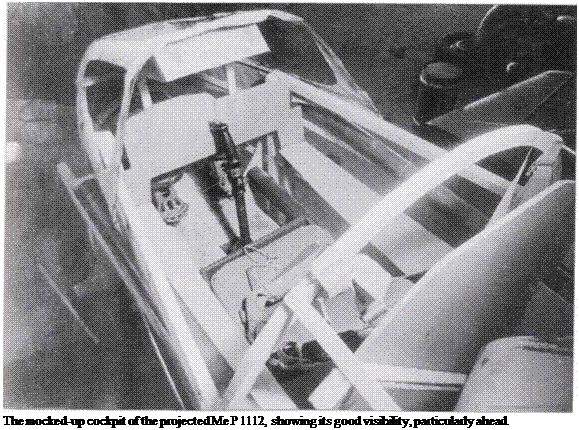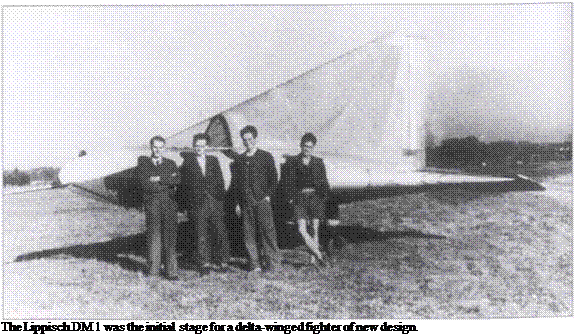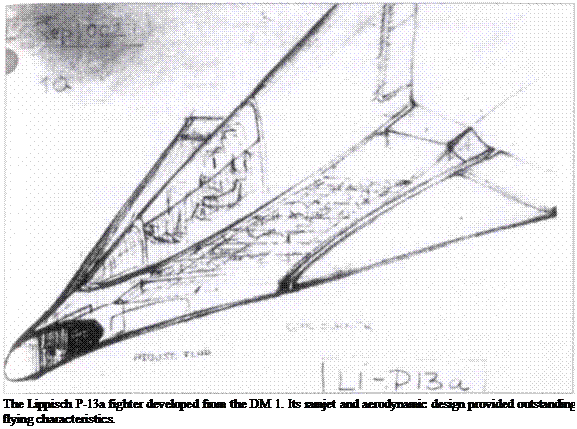New Technologies in the Wind

EHK was basically interested in proven concepts. What was required was new ideas such as variable-wing geometry as applied in 1945 to all projected German
fighters in the ‘high performance range’, and research on high speeds, which Messerschmitt was conducting into several developments based on the Me 262 A-la. Apart from a prototype with larger wings and swept-back tailplane at the beginning of 1945, Messerschmitt had no possibility of introducing significant modifications to Me 262 series production.
New wing shapes with critical profiles, such as swing-wings, remained purely theoretical since even the most minor modification to series production would interfere seriously with the rate of output. From December 1944, ideas were exchanged between DVL and the development bureau at Oberammergau on a supersonic fighter. There were at least three studies of the Me PI 106 in hand. This was a small jet with HeS Oil turbine and swept wings. Besides this project, later variants with a TLR (Turbinen-Luftstrahl-Raketen: turbine—rocket combination) or pure rocket engine were calculated to be capable of 1,500 km/hr (930 mph). Whether the Me PI 106 could have exceeded Mach 1 is unproven, however.

Professor Alexander Lippisch was also very interested in supersonic aircraft, for which he developed his P-13 design, a ramjet fighter with additional rocket propulsion. According to surviving calculations this aircraft could have flown at 1,650 km/hr (1,025 mph). As with the bulk of all project studies, the P-13 was never realised. Only DM 1, an experimental machine for subsonic speeds, was captured by Allied forces at Prien/Chiemsee.

When American scientific teams went to a cellar at Wetach/Allgau to recover the files of the Oberammergau research institute, they discovered that the French Army had been quicker and already spirited away 23 metal cases and eight watertight sealed steel tubes of drawings. The Me PI 101 files were not made available to the Americans until much later. The American team made two other finds in the Oberammergau district, while a fourth fell into the hands of a British Army captain. Eventually everything was confiscated bar four metal cases. Files in central Germany and Austria, captured mainly by Russian troops, were a rich harvest not to be shared with allies. This was also the case for projects described here, where British and American teams gathered the majority of the spoils.










